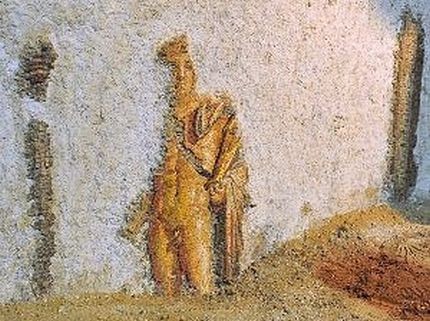Ancient treasures of Afghanistan
Ancient treasures of Afghanistan
Tillya tepe means Golden Hill, an archaeological site in Afghanistan near Sheberghan, surveyed in 1979 by a Soviet-Afghan mission of archaeologists led by Victor Sarianidi. The hoard contained about 20,000 gold ornaments found in six graves (five women and one man) with extremely rich jewelry, dated to around the 1st century BC. Several thousand pieces of recovered fine jewelry were made of gold, turquoise, lapis-lazuli. The ornaments included coins, necklaces, belts, medallions and crowns.
Some of the finds are a part of the traveling exhibition titled “Afghanistan: Hidden Treasures From the National Museum, Kabul”, first displayed in 2006 in France’s Musee Guimet in Paris, in Washington, D.C. from May 25th to Sept. 7th, 2008; from Oct. 24th, 2008 to Jan. 25th, 2009 the collection was at the Asian Art Museum of San Francisco; from February 22 to May 17, 2009 it traveled to The Museum of Fine Arts, Houston then to the Metropolitan Museum of Art, New York from June 23 to Sept. 20th, 2009; Canadian Museum of Civilization in Gatineau-Ottawa held the exhibition from October 23, 2009, to March 28, 2010; Bonn Museum in Germany from June 11, 2010 to January 2, 2011 and from March 3, 2011 to July 3, 2011 the British Museum in London.
Pendant made of gold, turquoise, Garnet, lapis lazuli, Carnelian and pearls, depicting Lord of dragons. Carefully sculpted ornament depicts a man in tunic and wide trousers typical of a nomad. He holds two Dragon-like creatures for the front paws. A mythical scene of ancient Persian and Siberian art denoting power and invincibility
Golden Crown. It was found in the tomb of a high-ranking female. Its basis is a diadem decorated with flowers. Center of flowers were once inlaid with turquoise. On the upper branches of four of the five trees of life sitting gold bird. Found in Tillia-Tepe, age 1. BC-1B. a.d.
Ancient treasures of Afghanistan

A pair of Turquoise and gold bracelet. They are separated by lion heads. Found in the burial ground No. 4 of Tillia-Tepe, age 1st century BC

Belt buckle made of gold and turquoise. It depicts Dionysus and Ariadne riding a lion. Found in the burial ground No. 4 of Tillia-Tepe, age 1century BC

belt buckles from a shoe made of gold, turquoise and carnelian. They depict the chariot, pulled by dragons. Found in the burial ground No. 4 of Tillia-Tepe, age 1. BC-1B. a.d.

Gold Buckle, which shows 2 Greek Warriors. Found in the burial ground No. 3 tillya-Tepe, age 1 century BC
wiki/Tillya_Tepe














